The African continent is home to an impressive range of deep lakes, including some well-known ones such as Lake Victoria, Lake Tanganyika, and Lake Malawi. However, several lesser-known lakes are equally remarkable, such as Lake Albert, Lake Turkana, and Lake Kivu. One fascinating aspect of these lakes is that many of them share borders with multiple countries, highlighting the interconnectedness of the region. Most of the major lakes are situated in the southern portion’s East African Rift Valley, a region known for its geologic activity and stunning landscapes.
In this article, we will delve into the fascinating world of the deepest Lakes in Africa, exploring their unique features and maximum depths, as well as their ecological and cultural significance. By the end, you will gain a greater appreciation for these natural wonders and the vital role they play in sustaining life in the region.
READ THIS NEXT: These are the Top 20 Deepest Lakes in the World
1. Lake Tanganyika (4,823 feet)
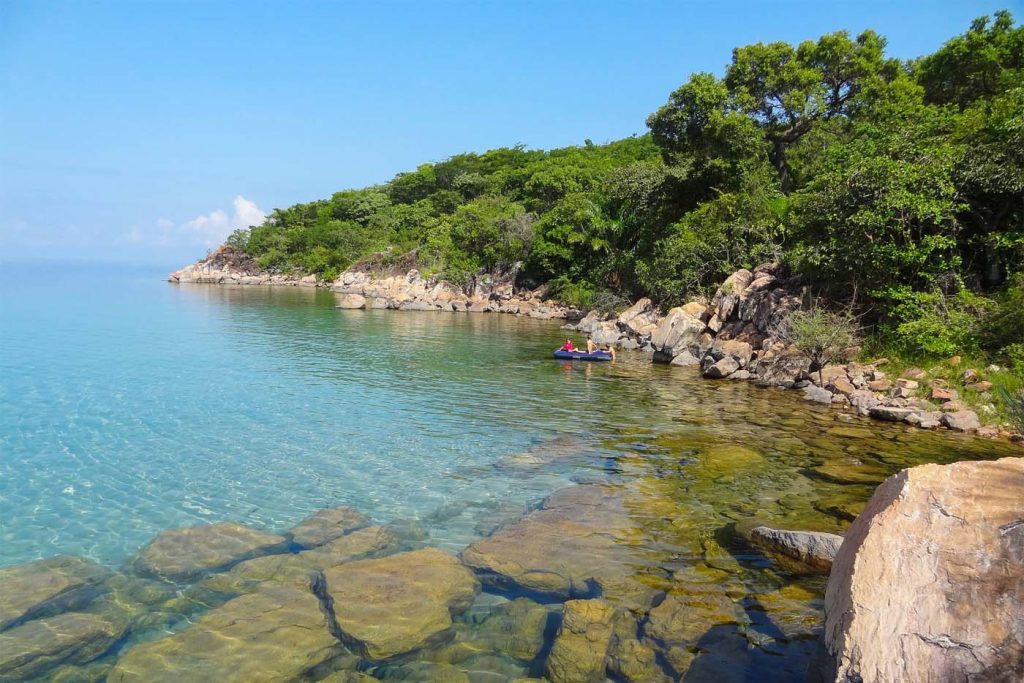
Lake Tanganyika is a fascinating and distinctive lake located in Africa. With a maximum depth of 1,470 meters (4,823 feet), it is the deepest lake on the continent and the second-deepest in the world after Lake Baikal in Russia. Not only is it deep, but it is also the longest lake globally, stretching approximately 673 kilometers (418 miles) long and having a maximum width of 72 kilometers (45 miles). It is also home to over 350 species of fish, including the colorful cichlid fish and the Tanganyika perch
Located in the Great Rift Valley, Lake Tanganyika is shared by four countries: Tanzania, the Democratic Republic of Congo, Zambia, and Burundi. Its crystal-clear waters and stunning beaches and fishing villages along the shore make it a popular destination for tourists.
The lake is also a crucial source of water for the surrounding communities. Several towns are located along its shores, and the lake supports local fishing industries, providing food and income for the local people.
2. Lake Malawi (2,316 ft)
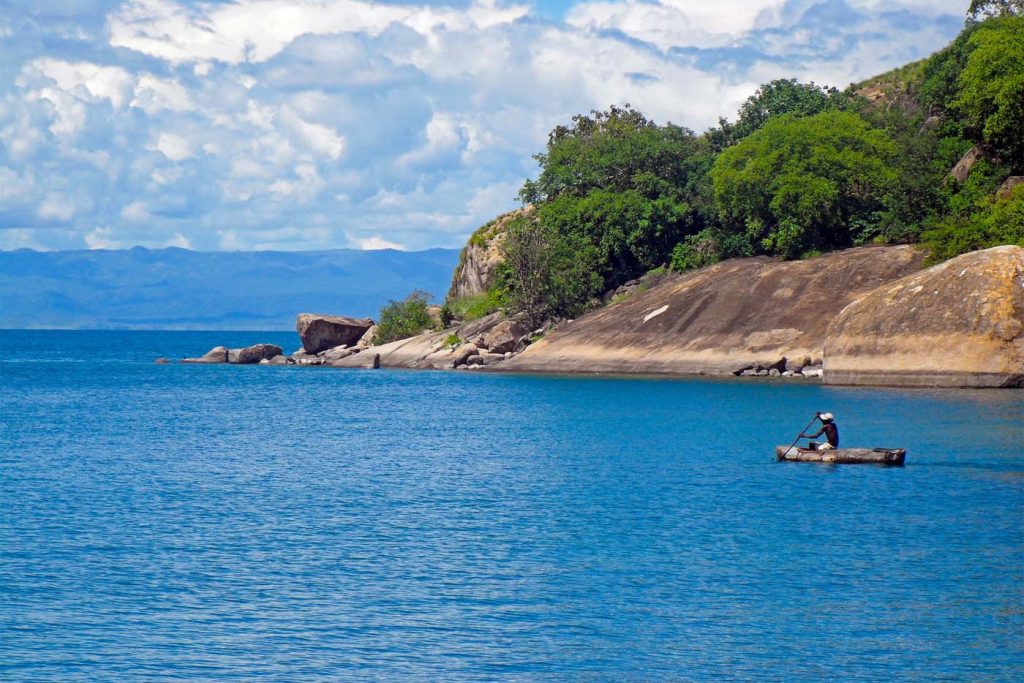
Lake Malawi, also referred to as Lake Nyasa or Lago Niassa in Mozambique, is a magnificent African Great Lake that spans across three countries: Malawi, Mozambique, and Tanzania. With an impressive depth of 706 meters (2,316 ft), it is the second-deepest lake in Africa and one of the deepest lakes in the world ranking at number six. Furthermore, Lake Malawi is the third-largest lake in Africa, covering an area of 29,600 square kilometers (11,400 square miles).
One of the most remarkable features of Lake Malawi is its vast array of fish species, with over 1,000 recorded species, making it the lake with the highest number of fish species in the world, representing around 15% of all freshwater fish species on Earth, including the colorful Lake Malawi cichlid fish that are unique to the lake. Lake Malawi is a vital source of water for the surrounding communities, and its shores provide a habitat for diverse flora and fauna.
3. Lake Kivu (1,575 feet)
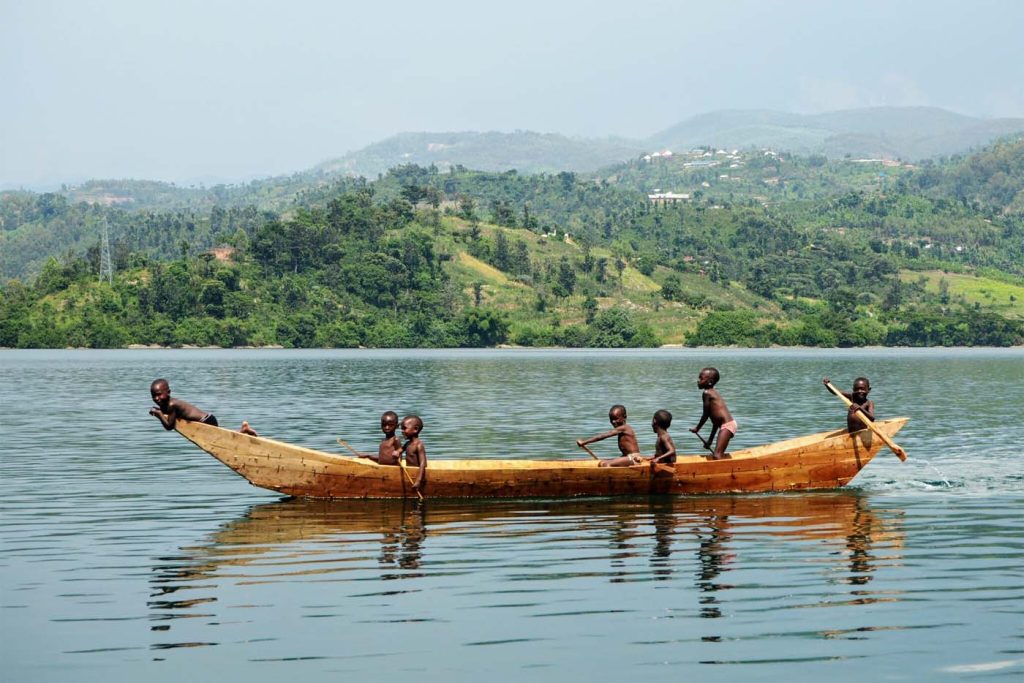
Lake Kivu is one of the most significant African Great Lakes. It is situated on the border between Rwanda and the Democratic Republic of Congo and is renowned for its depth, which reaches an impressive maximum of 480 meters (1,591 feet), making it the third deepest lake in Africa.
This lake stretches approximately 89 km (55 mi) in length and 48 km (30 mi) at its widest. Its unique shape makes it challenging to measure its precise surface area; however, experts estimate that it covers a total surface area of approximately 2,700 km2 (1,040 sq mi), making it Africa’s eighth-largest lake.
Lake Kivu is one of the few lakes in the world that contains high levels of dissolved gases, such as carbon dioxide and methane. Additionally, it is home to the world’s tenth-largest island in a lake, Idjwi, situated within the boundaries of Virunga National Park, adding to its ecological significance.
4. Lake Edward (367 feet)
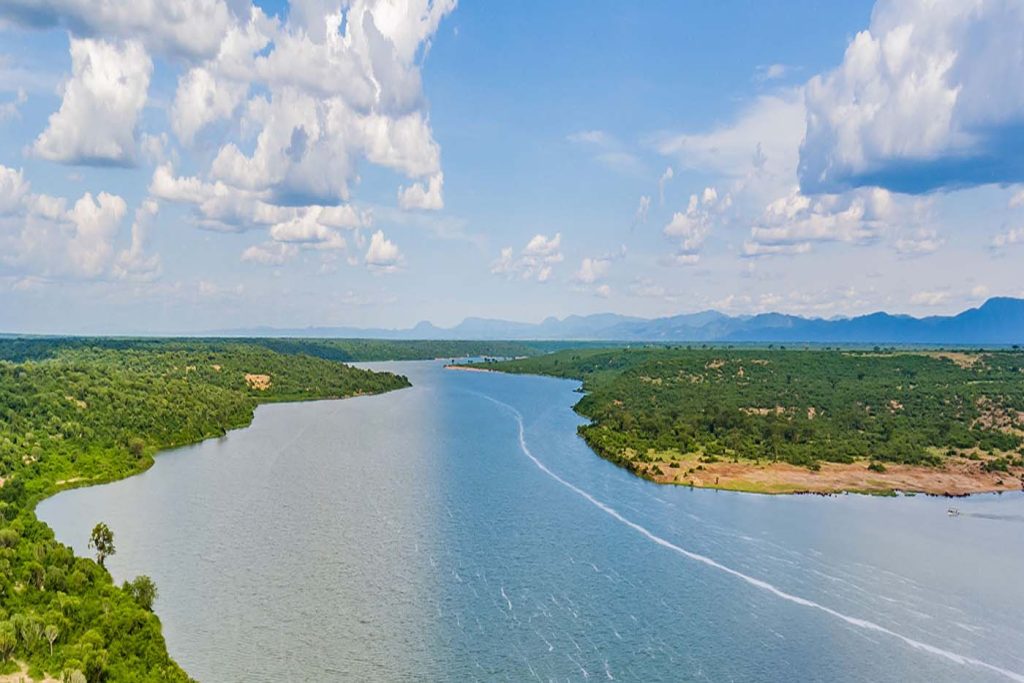
Located on the border between Uganda and the Democratic Republic of Congo, Lake Edward is the 15th largest lake in the world and the smallest of the African Great Lakes.
Lake Albert has a maximum depth of 112 meters (367 feet) making it the 4th deepest lake in Africa. It is named after Queen Victoria’s husband, Prince Albert, and It lies entirely within either the Virunga National Park or the Queen Elizabeth National Park and is fed by the Nyamugasani, Ishasha, Rwindi Rutshuru, Ntungwe, and Lubilia rivers.
The lake is home to various species of fish, including tilapia and Nile perch, and is an essential source of fish for the local communities.
5. Lake Turkana (358 feet)
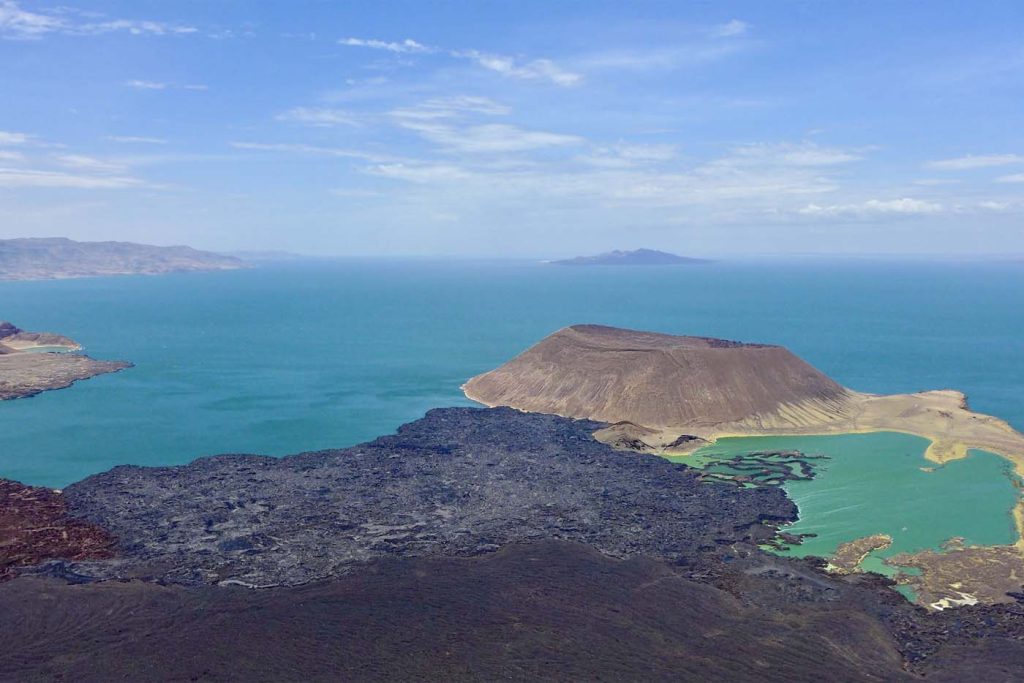
Lake Turkana, also known as the Jade Sea or formerly known as Lake Rudolf, is a breathtakingly beautiful lake located in the Kenyan Rift Valley. It is the largest permanent desert lake in the world, covering an area of approximately 6,405 square kilometers (2,473 square miles). The lake is known for its unique greenish-blue color, which is caused by the algae and mineral content in its waters. With a maximum depth of 109 meters (358 feet), Lake Turkana is one of the deepest lakes in africa taking the fifth position.
The lake is also home to a wide range of aquatic species, including the Nile crocodile, hippopotamus, and various species of fish, such as tilapia and catfish. The lake’s surroundings are dotted with numerous islands, some of which have historical significance, including South Island, where the Koobi Fora archaeological site, famous for its numerous hominid fossils, is located.
READ THIS NEXT: These are the largest man-made lakes in Africa
6. Lake Victoria (276 feet)
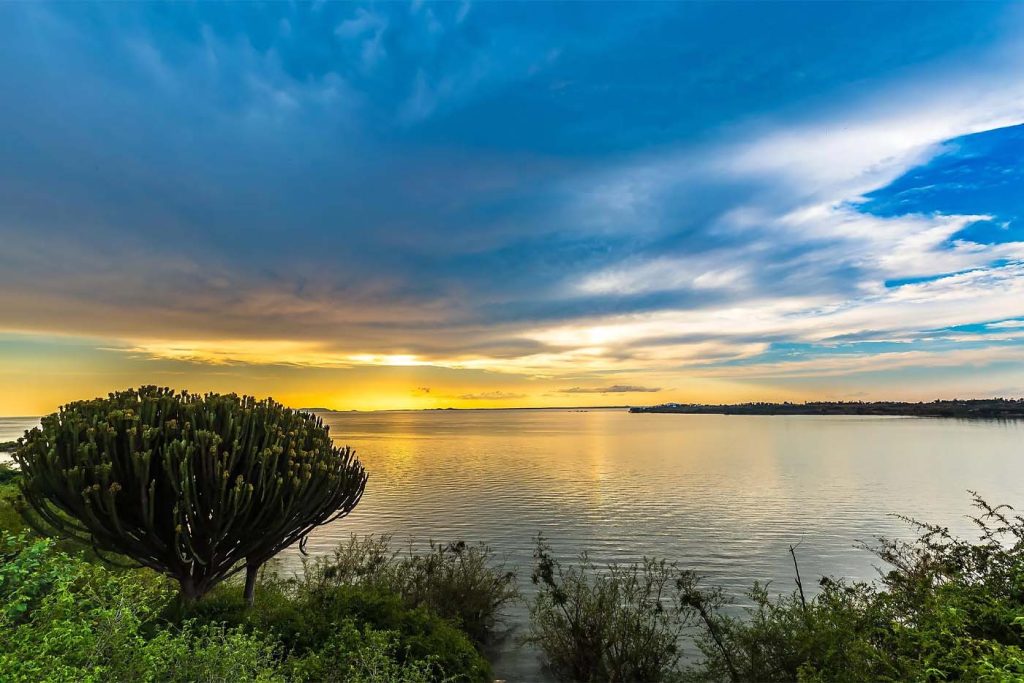
Lake Victoria is the largest lake in Africa and the second-largest freshwater lake in the world, covering an area of approximately 68,800 square kilometers (26,600 square miles). The lake is shared by three countries: Kenya, Uganda, and Tanzania. It has an average depth of 40 meters (130 feet) and a maximum depth of 84 meters (276 feet) making it one of the deepest lakes in Africa. One of Africa’s Great Lakes, the lake was named after Queen Victoria.
Lake Victoria is an essential source of water and livelihood for millions of people who live around its shores, providing water for domestic use, agriculture, and fishing. The lake is also known for its rich biodiversity, with over 500 species of fish, including the Nile perch, tilapia, and catfish. However, the lake is facing significant challenges due to pollution, overfishing, and climate change. These factors have led to a decline in the fish population and have negatively impacted the lake’s ecological balance.
7. Lake Albert (167 feet)
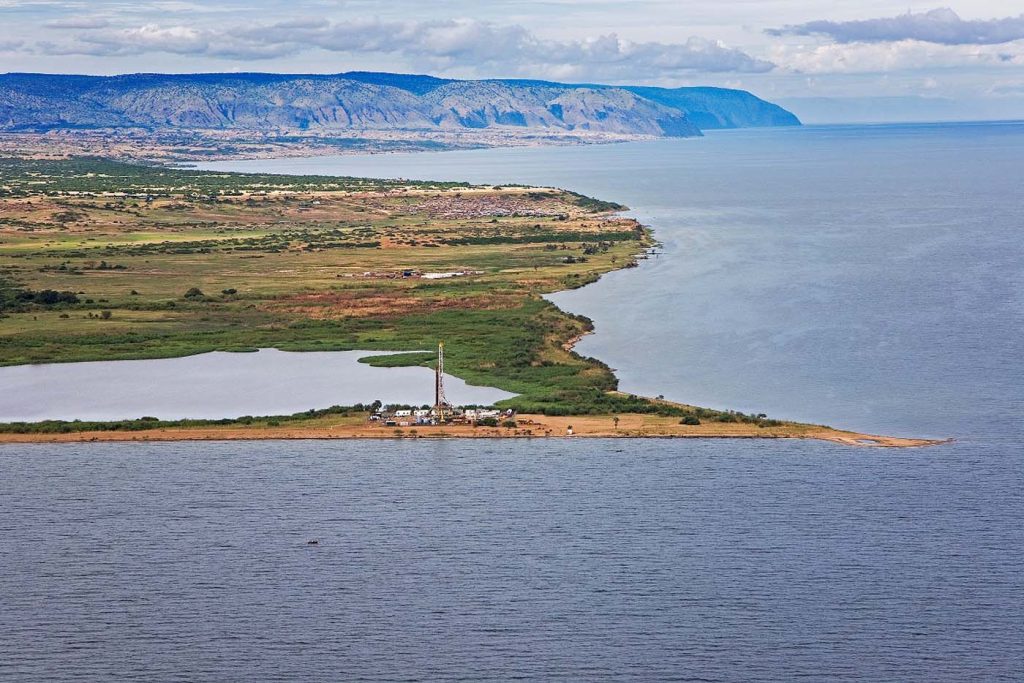
Lake Albert is located in the Great Rift Valley and is shared by two countries, Uganda and the Democratic Republic of the Congo. It covers an area of approximately 5,300 square kilometers (2,000 square miles) and has a maximum depth of 51 meters (168 feet). The lake was named after Queen Victoria’s husband, Prince Albert, and is also known as Lake Mobutu Sese Seko in the Democratic Republic of the Congo.
The lake is an important source of fish for local communities and supports a variety of wildlife, including hippos and crocodiles. The lake is also home to several bird species, including the Shoebill Stork, which is considered a threatened species.
8. Lake Mweru (89 feet)
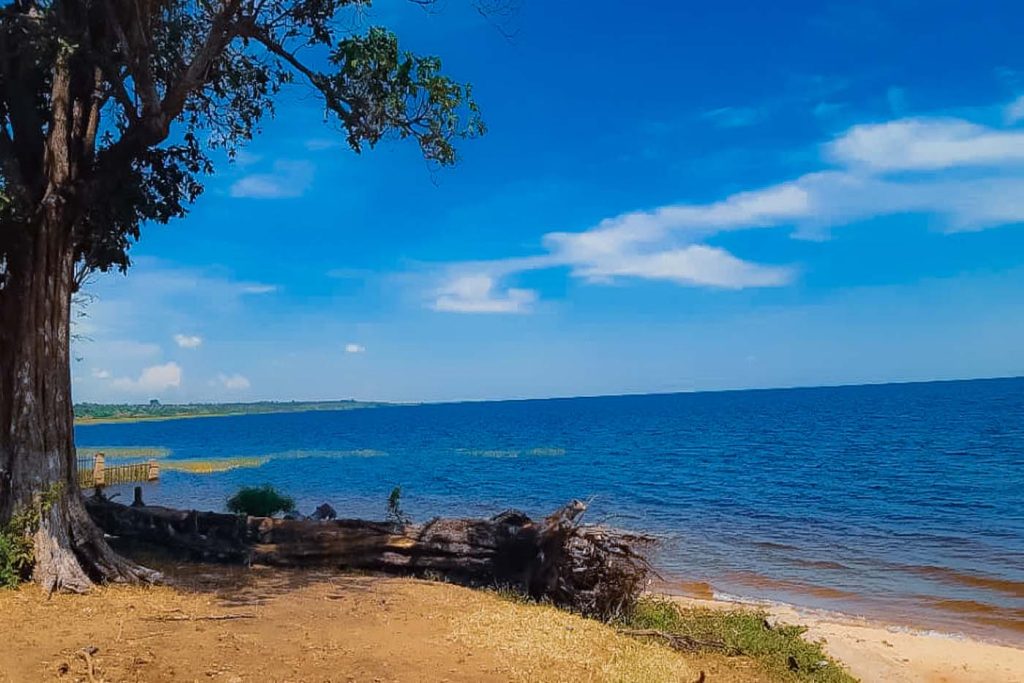
Lake Mweru is a freshwater lake located on the border between Zambia and the Democratic Republic of the Congo. It covers an area of approximately 5,120 square kilometers (1,980 square miles) and has a maximum depth of 27 meters (89 feet).
The lake is fed by several rivers, including the Kalungwishi River, and is drained by the Luvua River, which flows into the Congo River. Lake Mweru is an important source of fish for local communities, and fishing is the primary economic activity around the lake. The lake is also home to several bird species, including the African fish eagle, which is known for its distinctive call.
9. Lake Tana (49 feet)
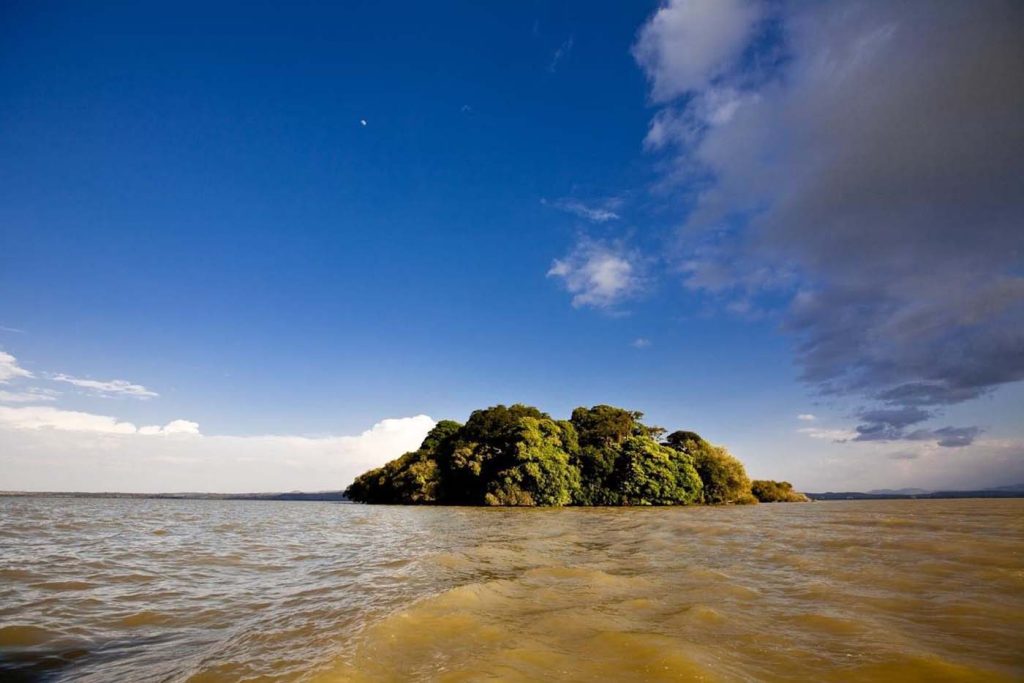
Lake Tana is the largest lake in Ethiopia and the source of the Blue Nile River. It covers an area of approximately 3,200 square kilometers (1,200 square miles) and has a maximum depth of 15 meters (49 feet). The lake is located at an elevation of 1,840 meters (6,040 feet) above sea level and is surrounded by forested hills and mountains. Lake Tana is an important source of water for irrigation, hydropower, and fishing.
The lake is home to several endemic fish species, including the Lake Tana barb and the African tigerfish. The lake is also an important bird habitat and is home to several species of waterbirds, such as the African fish eagle and the saddle-billed stork. Lake Tana is considered a sacred site in Ethiopian Orthodox Christianity, and several monasteries are located on the lake’s islands and shores. These monasteries house valuable religious artifacts, including ancient manuscripts and icons.
10. Lake Mai-Ndombe (33 feet)
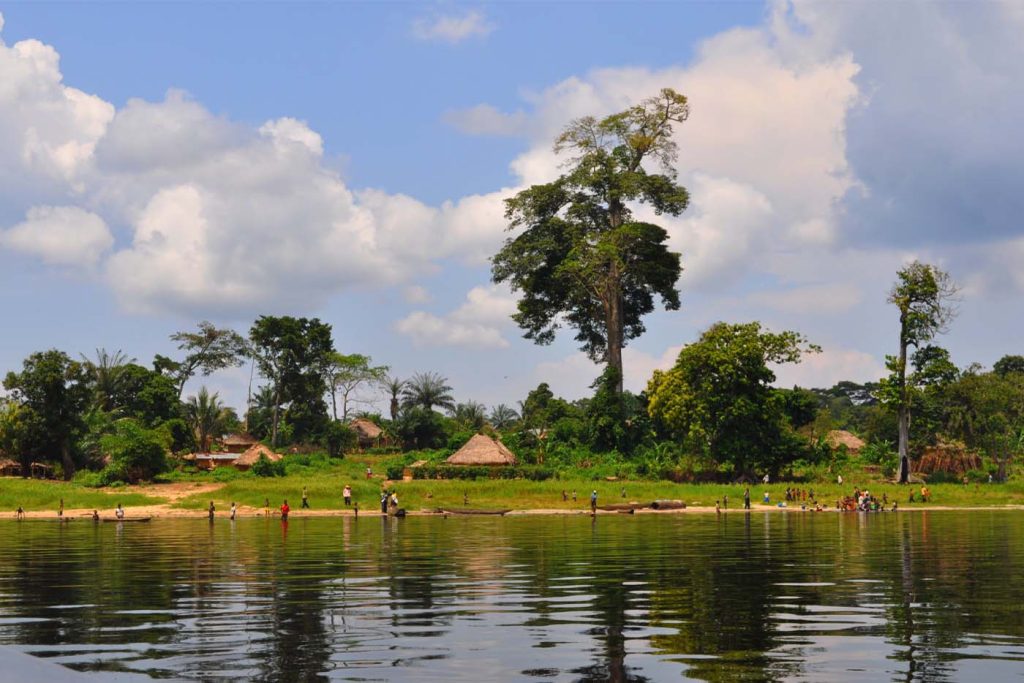
Lake Mai-Ndombe, also known as Lake Leopold II, is the second-largest lake in the Democratic Republic of the Congo, covering an area of approximately 2,300 square kilometers (890 square miles). It is located in the Congo Basin and has a maximum depth of 10 meters (33 feet) making it the 10th deepest lake in Africa. The lake is fed by several rivers, including the Fimi and Lukenie Rivers, and is drained by the Congo River.
Lake Mai-Ndombe is an important source of fish for local communities, and fishing is the primary economic activity around the lake. The lake is also home to several bird species, including the African grey parrot and the African fish eagle. The lake and its surrounding forests are part of the Congo Basin rainforest, one of the most biodiverse regions on Earth.






